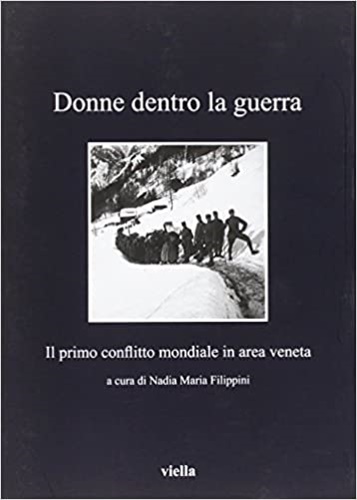 Actes du Colloque, Universitè de Lausanne:
Donne dentro la guerra. Il primo conflitto mondiale in area veneta.
Actes du Colloque, Universitè de Lausanne:
Donne dentro la guerra. Il primo conflitto mondiale in area veneta.
A cura di Nadia Maria Filippini. Roma, Viella Editrice
2018,
cm.15x21,
pp.222,
brossura copertina figurata a colori.
Coll.I Libri di Viella,269.
Centenario della Prima Guerra Mondiale.
La Grande Guerra non è stata un'esperienza omogenea per la popolazione civile. Nella cosiddetta "zona di guerra", a ridosso dei fronti di combattimento, le donne subirono in anteprima gli effetti di una guerra totale: bombardamenti e devastazioni, commistione con le truppe, requisizioni, violenze, stupri, evacuazioni e profugato. Il coinvolgimento nelle vicende belliche accentuò il loro ruolo di vittime, ma stimolò anche per converso un protagonismo più attivo con l'assunzione di ruoli e incarichi rilevanti sul fronte interno. Il libro analizza questi diversi aspetti, mettendo a fuoco le ripercussioni sulla vita quotidiana, il dibattito politico, la mobilitazione delle donne, l'attività dei Comitati di assistenza civile, il ruolo e l'azione di alcune figure di protagoniste. Il quadro che ne emerge, per alcuni versi inedito, mostra una realtà a lungo oscurata nella ricostruzione delle memorie, aggiungendo un tassello importante alla storia della Grande Guerra in una prospettiva di genere.
EAN:
9788867289240
Nuovo